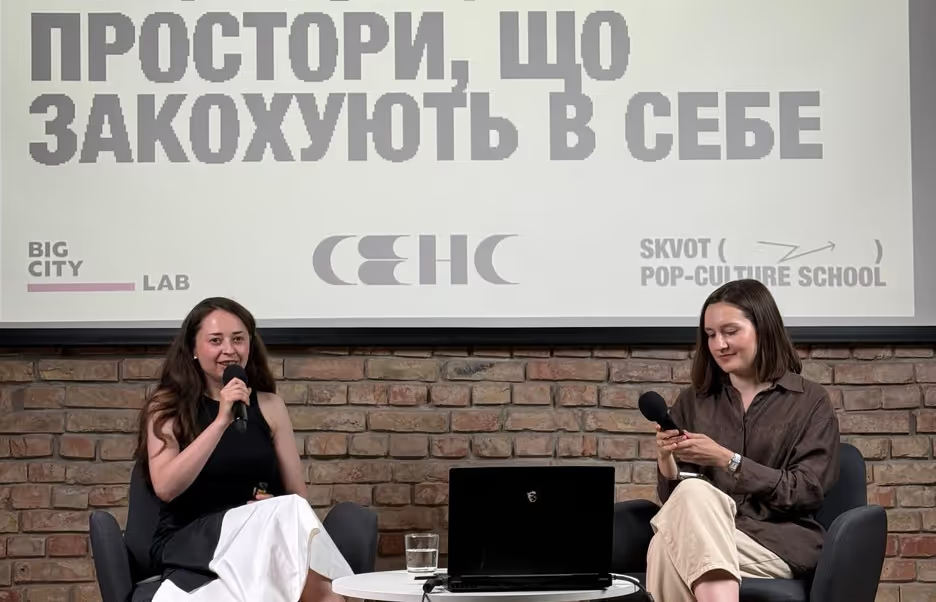
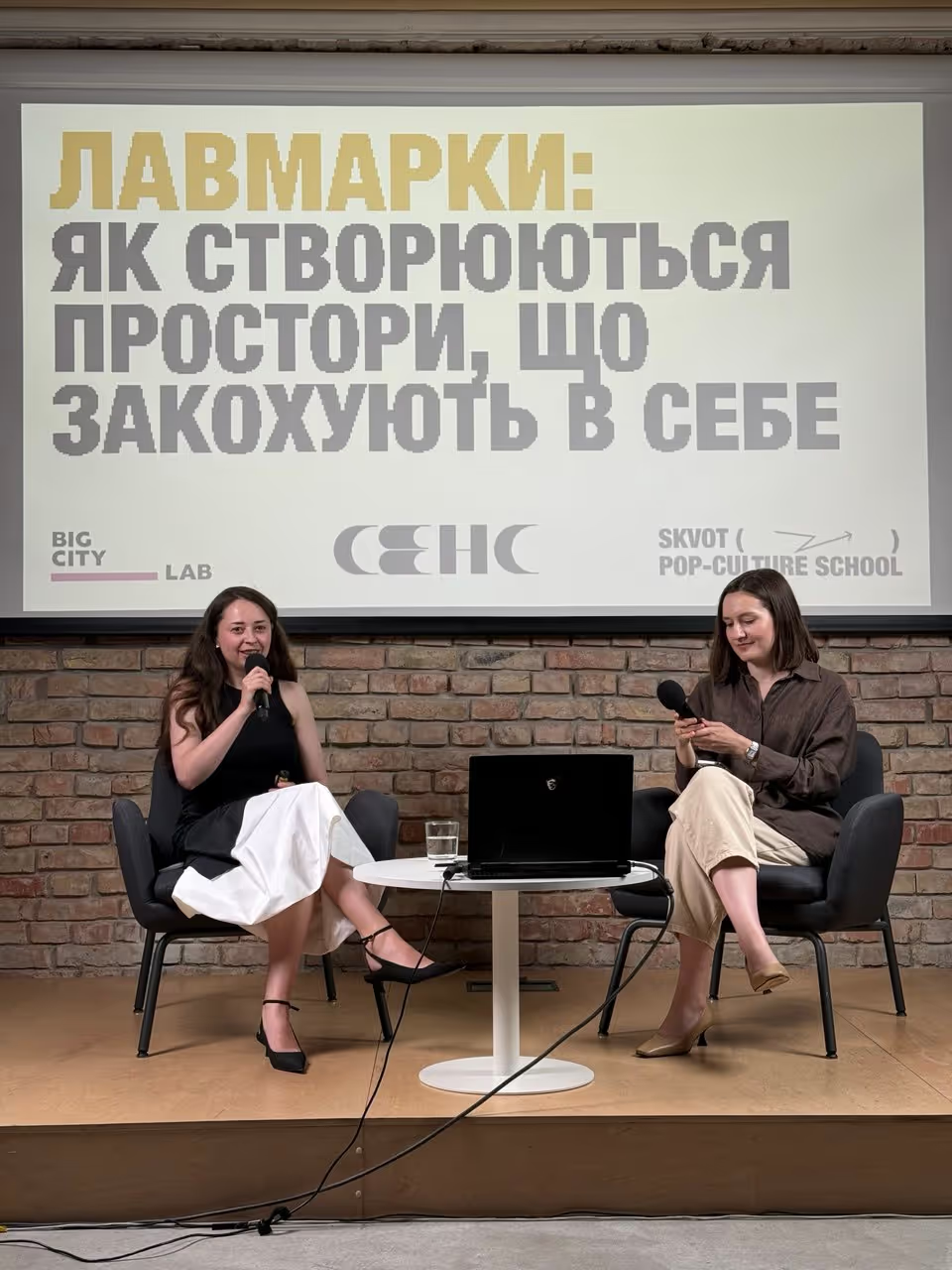
Everyone has heard the trendy term ‘lovemark,’ but what does it mean? Why do some places become favourites among residents, while others remain just another location? And most importantly, how do you create a space that people will want to return to?
Victoriia Titova, CEO of the Big City Lab urban bureau, spoke about this and much more during the lecture ‘Landmarks. How to create a space that people will fall in love with’, organised by the Big City Lab urban bureau, the Sens bookstore, and the SKVOT online school. The second speaker at the event was Victoriia Sereda, marketing director of the Sens bookstores.
Every city has its own iconic and recognisable locations. Often, these are the places that the internet suggests first when you are planning a trip somewhere. However, not all of them are lovemarks - spaces that we sincerely love and feel something for.
During the lecture, our CEO asked the audience to share which places in Kyiv they love. Among the spaces mentioned were Peizazhna Alley and Andriivskyi Uzviz, the Hryshko Botanical Garden, Trukhaniv Island, and Blue Lake in Vinogradar, the Velodrome and Samosad, the Plekay bookstore and the Sens on Khreshchatyk, the ART Pier and the Don't Sleep coffee shop. This shows that often lovemarks are places in the neighbourhood associated with warm memories, such as time with family, meetings with friends, and dates with loved ones.
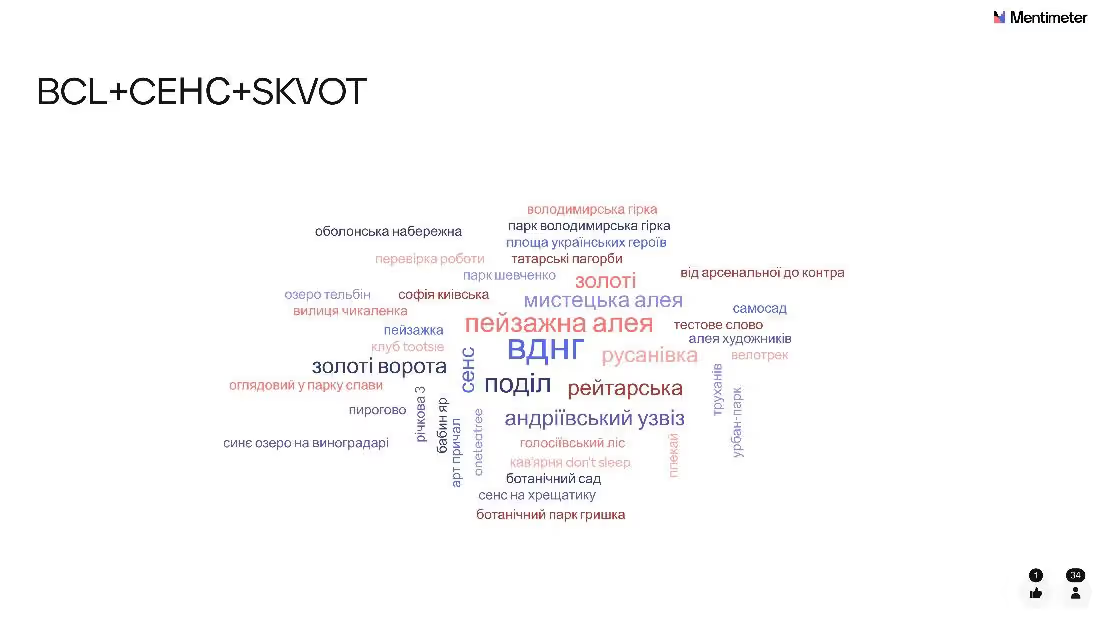
‘A favourite space can become part of our identity. I like how the Podil community refers to itself as Podillians. It is part of who they are. As a result, Podil is beginning to develop. Despite the fact that the district is considered to be neglected by city management, it is being developed by the community. After all, when we love something, we take care of it. This is why participation is key to creating a space that people love and use. At the beginning of each of our projects, we interact with the local community. This allows us to understand what people value in a particular location, what they want to get rid of and how they would like to feel here,’ said Victoriia Titova.
She highlighted the main principles of creating landmarks.
Big City Lab case: creation of the multifunctional sports centre ‘Loko City’
As part of the ‘Loko City’ project, a participatory meeting was held for 35 people. These included railway workers, Lokomotiv coaches, parents of children who train there, residents of the Solomyanskyi district, representatives of public organisations and the veteran community. During the two-hour event, they generated over 160 proposals for the future space.
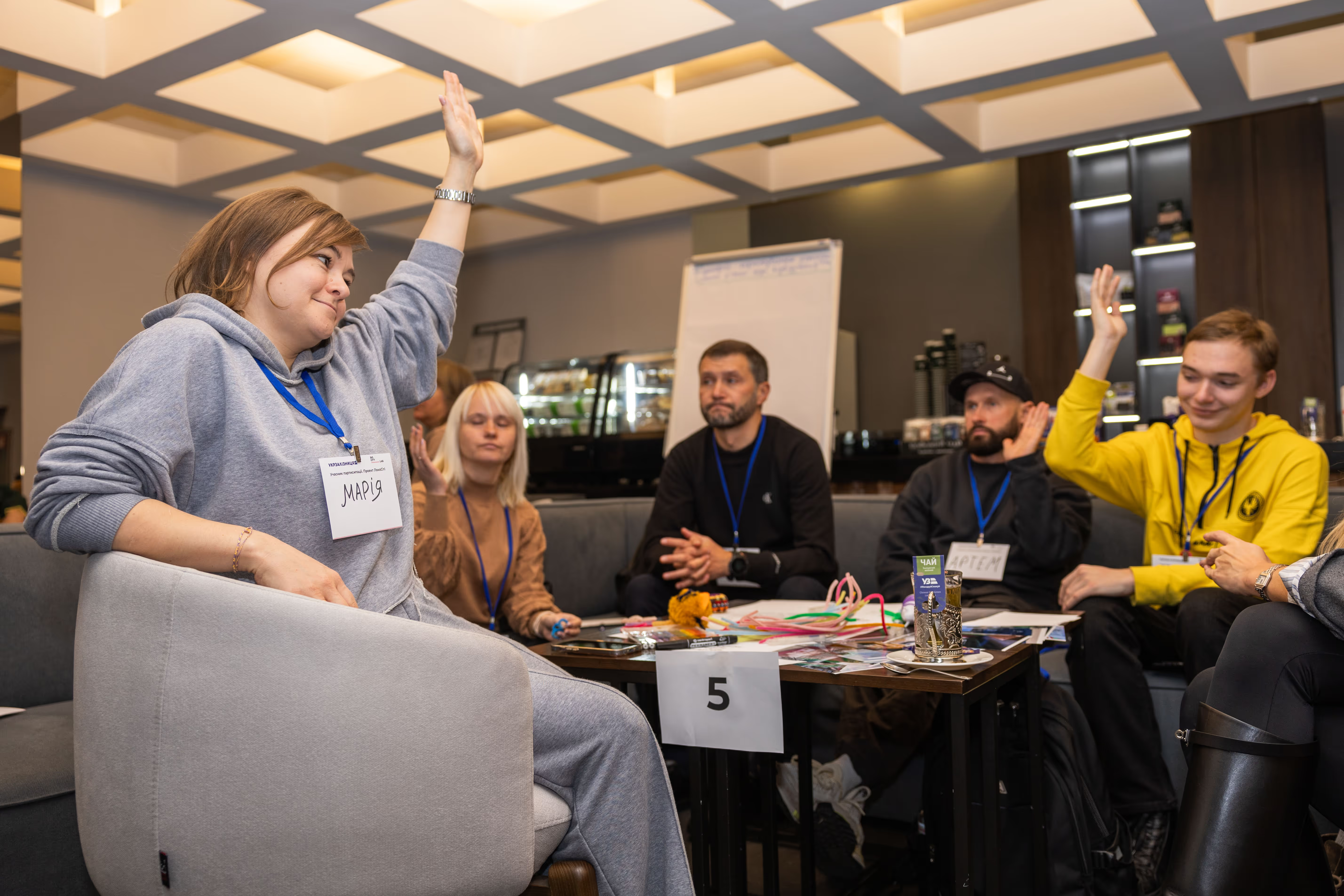
Big City Lab case: Transformation of typical Soviet schools
The team took a Soviet school, which was designed for an outdated education system, and transformed it so that the children and their needs were at the centre. To achieve this, we conducted focus groups with students, teachers, school principals and education experts.
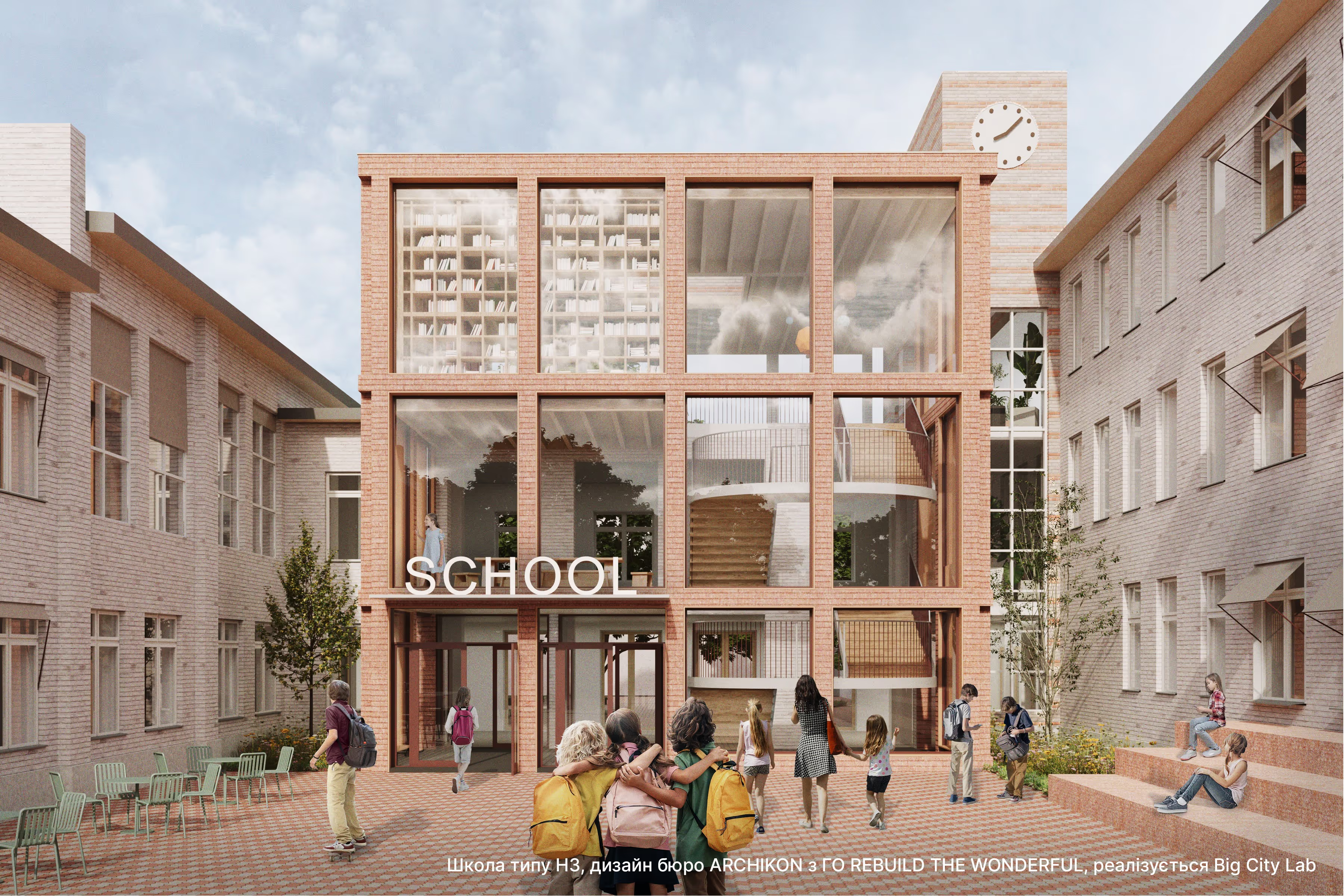
Big City Lab case: Gurov Park in Mariupol
Around 10,000 people gather in this park every year to celebrate Metallurgist Day. This is a significant but specific holiday for the region. Therefore, it was important to create a space suitable for large-scale events and everyday recreation.

Big City Lab case: Therapeutic Garden at the Expocenter of Ukraine
It is difficult to become attached to something you only see. Every day, we scroll through dozens of internet pages, but not all of them evoke strong emotions. However, some smells transport us back to our childhood. There is something you can touch, and it grounds you. It was in the Therapeutic Garden that we began to work with sensory perception.

Big City Lab case: KYT performance pavilion
Once work began on the pavilion and the curtains had been removed, it transpired that there were large, beautiful 'farms' (supporting elements) that resembled a whale skeleton. There is also a whale sculpture in front of the entrance. Therefore, we worked with the architecture of the location, combining these images with the concept of the future space.

Big City Lab case: New classrooms and science laboratories for the New Ukrainian School
You can walk into a room and see either plain plasterwork or evidence of someone who has considered every detail to be both beautiful and functional. The difference is obvious. Therefore, when developing solutions for the New Ukrainian School, the bureau's team not only worked on the general zoning, but also on the details, such as chairs, desks, cabinets and demonstration materials. This is the only way to create an environment that inspires learning.
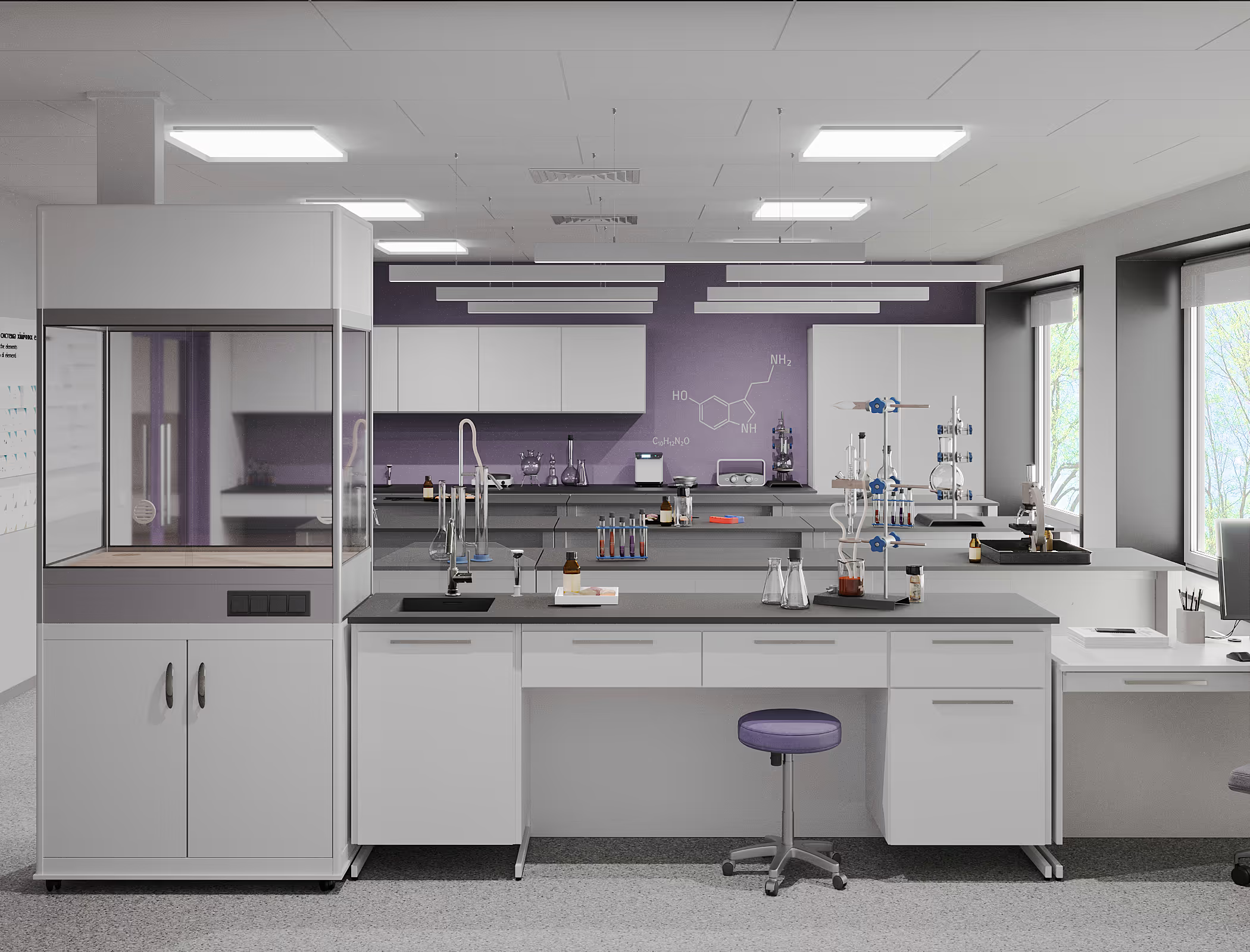
Big City Lab case: Urban Park at the Expocenter of Ukraine
Today, the word ‘collaboration’ has acquired a negative connotation; however, it originally meant joining forces for a common goal. And it really works. When creating the urban park at the Expocenter of Ukraine, we collaborated with four partners: PUPA, Urban Reform, Street Culture, and Mind Work Ramps. This enabled us to complete different sections of the project in an impressive manner. After all, everyone has their own background and strengths. Mind Work Ramps, for example, builds skate parks all over the world. It’s a very specific area of expertise that enables us to create high-quality products.
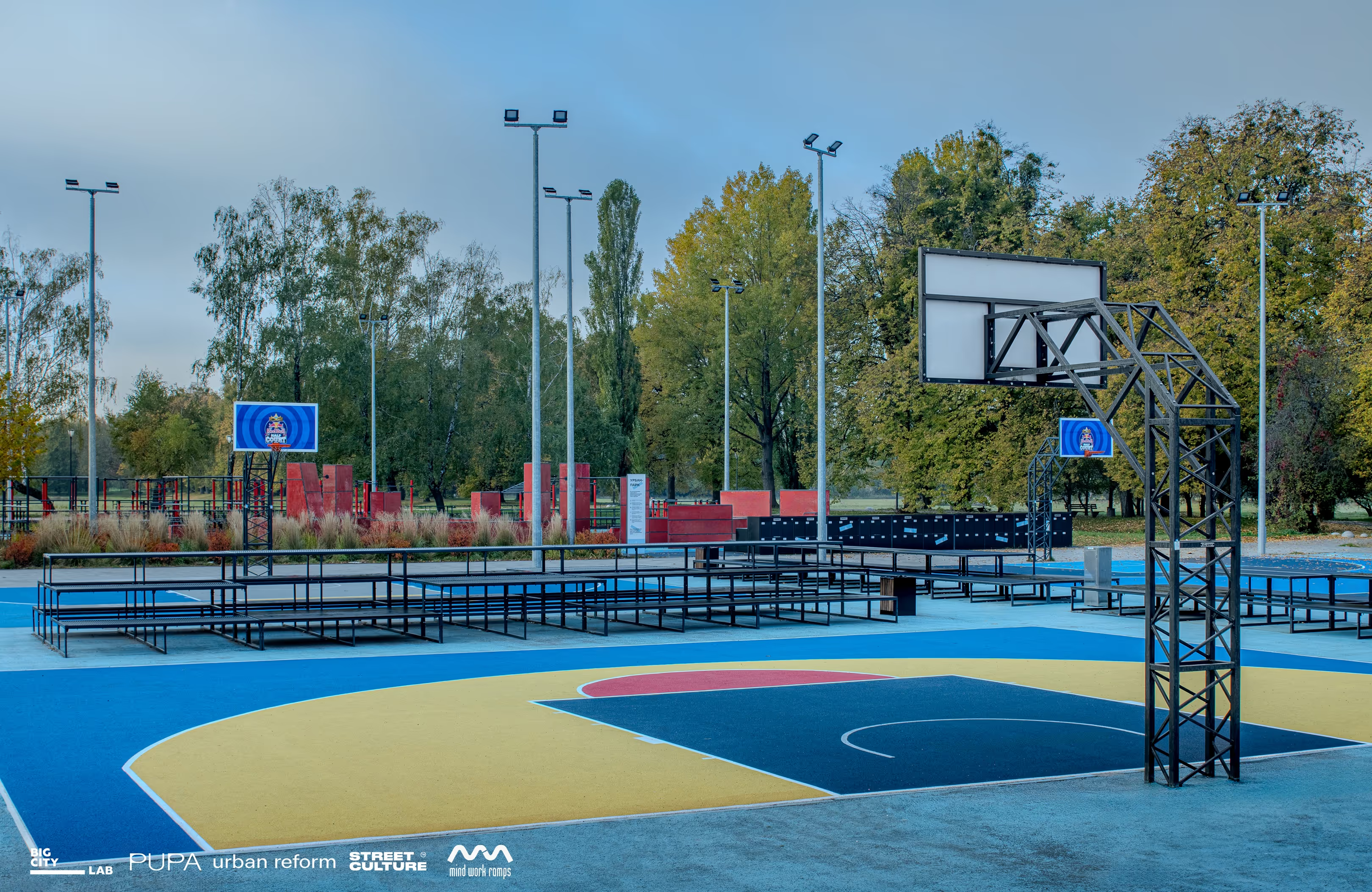
Big City Lab case: Urban park at the Expocenter of Ukraine
The key problem with public spaces in Ukraine is that they have two functions: to walk through them or to sit in them. In fact, a well-designed public space should have at least ten functions. And if you have designed a space and want to evaluate it, count how many activities can be done in it.
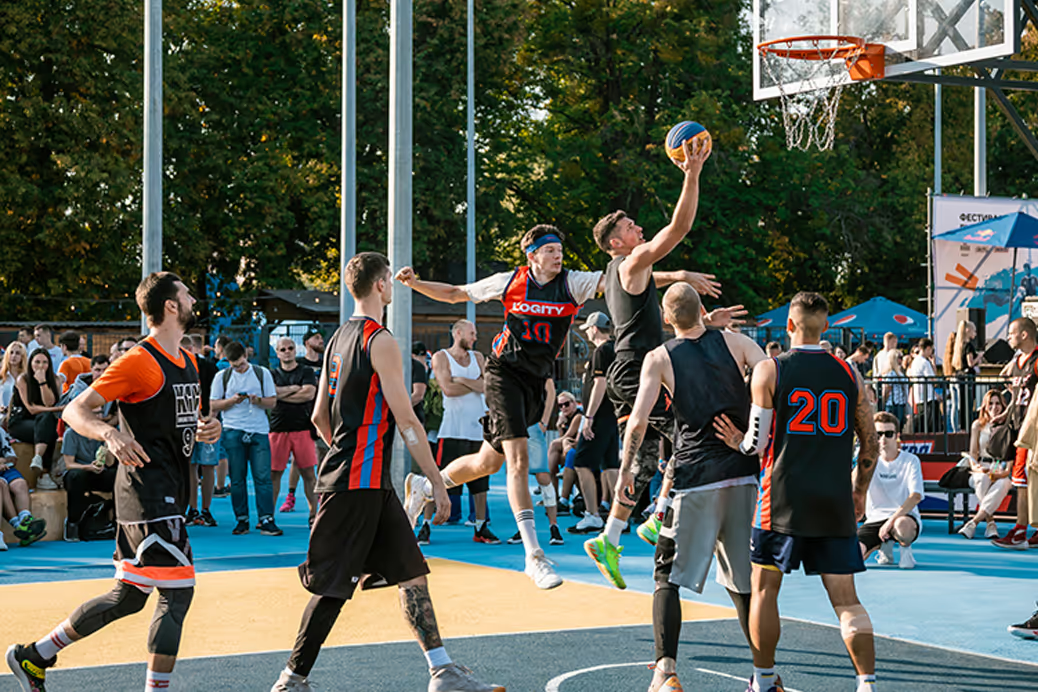
While Victoriia Titova talked about how to create lovemarks in urban spaces, Victoriia Sereda focused more on marketing activities that convey the values of the Sense and bring the community together.
The bookstore's history began with the creation of a community of like-minded individuals. After all, the original idea was to create an attractive space for neighbours where they could enjoy books, coffee and the Ukrainian language.
Immediately after the opening of the first space in Mykilsky lane, it became a meeting point for people from the cultural sector and related fields.
With the start of the full-scale invasion, however, Sense's positioning changed forever. In the first months of the great war, the Pechersk Cats' headquarters, a volunteer community in the Pechersk district, were set up here. People collected aid for the military and civilians, knitted camouflage nets and made trench candles.
‘One of the Sens's values is humanity in all its manifestations. All our bookshops have children's rooms and we hold children's reading sessions. We support the LGBTQ+ community and continually advocate for equality. Our spaces are inclusive. It was important for us to install a lift at the Sense on Khreshchatyk street. It is essential that the space is accessible and convenient for everyone, including mothers with baby carriages, wheelchair users, and people with reduced mobility’, shared Viktoriia Sereda.
Around a hundred people attended the lecture in person, and over 1 000 viewers watched it online.
{{book-11="/en/book-banners"}}